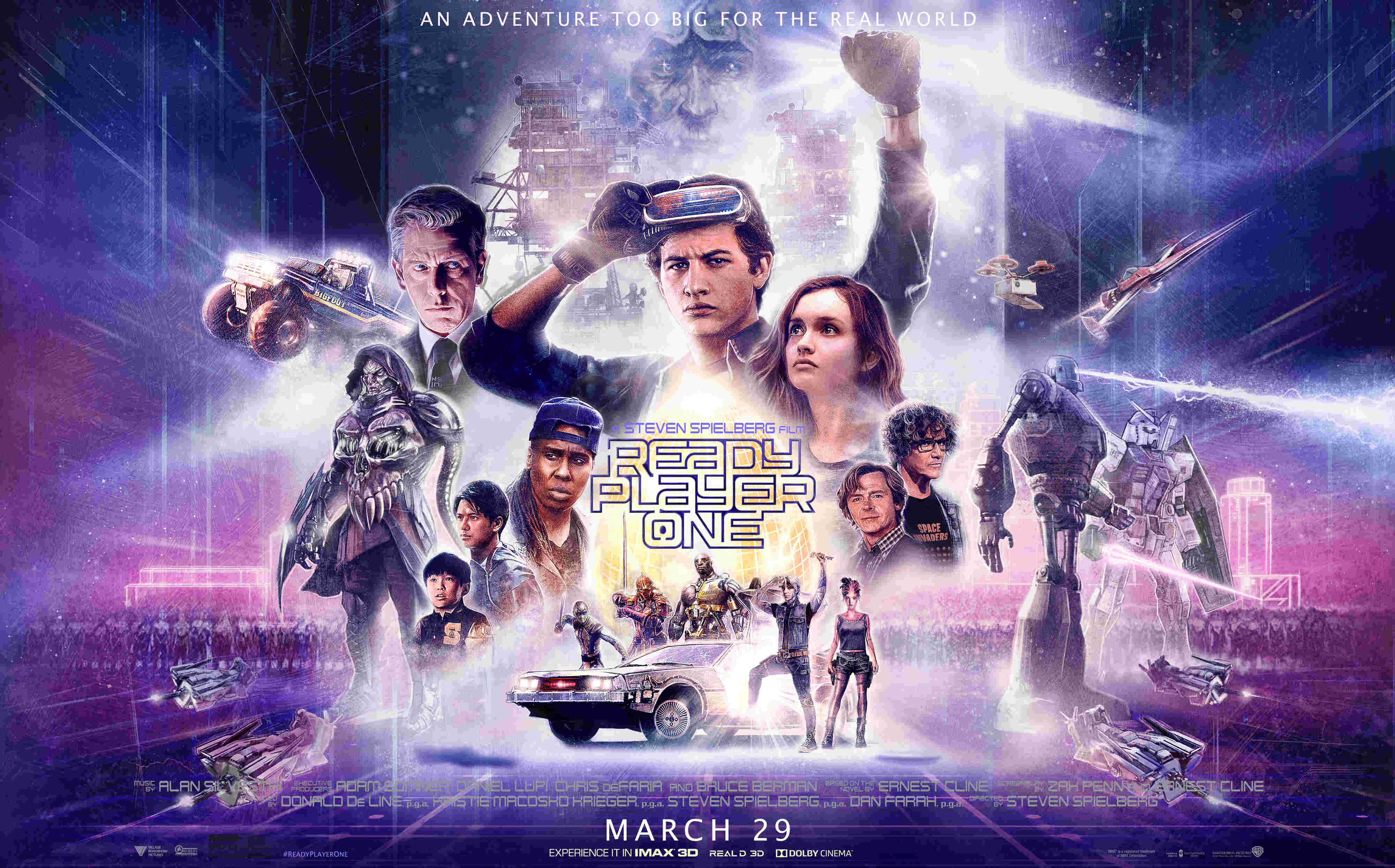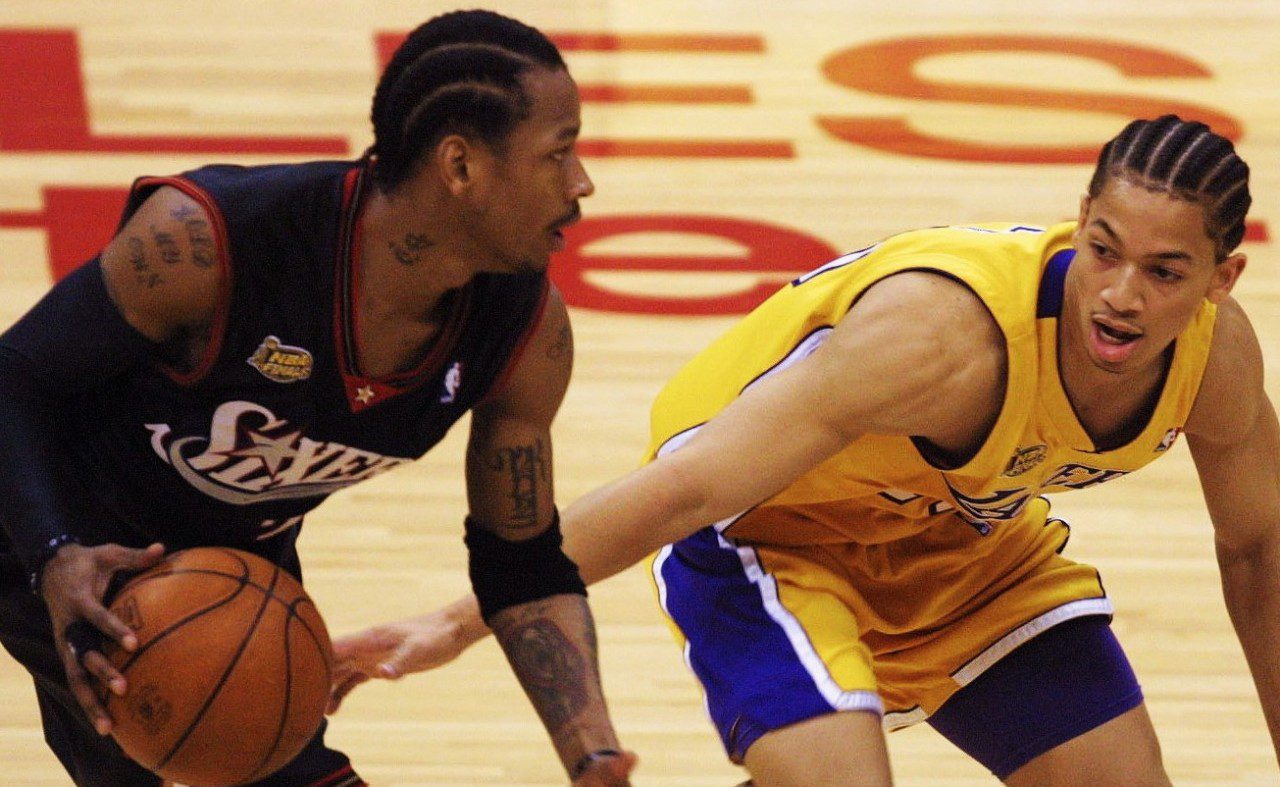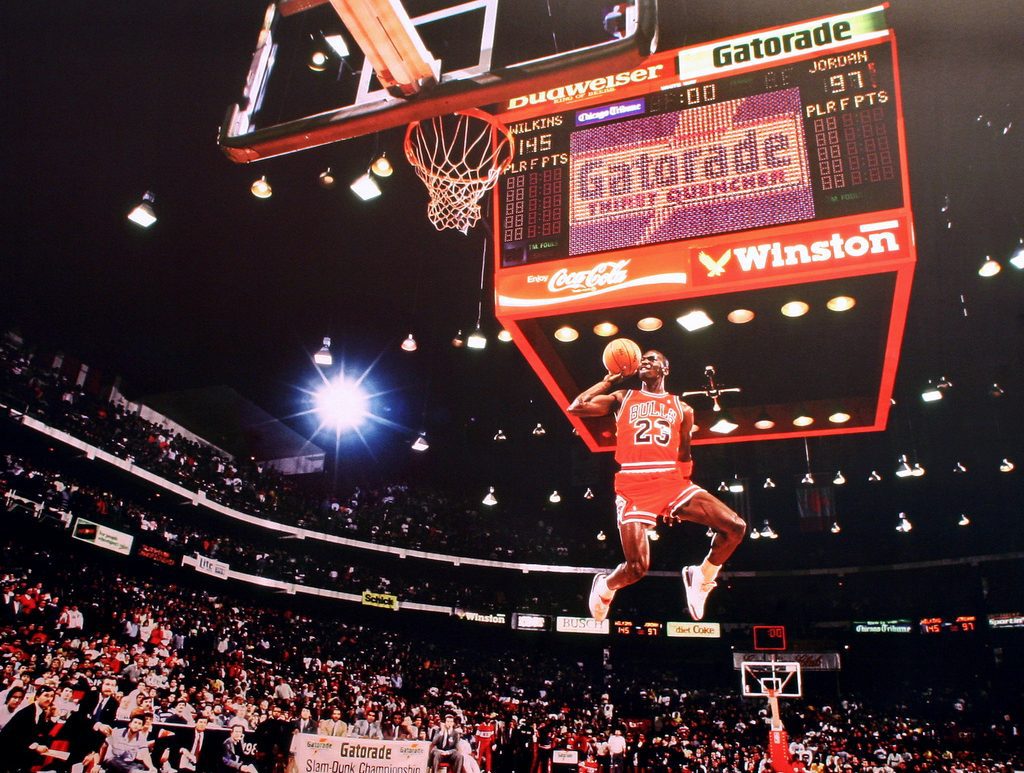Ready Player One
Who would you want to be in a world where pop culture comes to life? Ready Player One is Steven Spielberg’s return to blockbuster adventure, as he tells Ernest Cline’s story about Wade Watts, a kid that spends a majority of his day in the Oasis, a virtual universe where worlds, characters and items from games and movies become “real.” Wade is on a quest to find three keys that will lead to immense wealth and full control of the Oasis, built by the genius James Halliday, before the greedy IOI gaming conglomerate gets to them first. Tye Sheridan takes the lead, and is joined by Olivia Cooke, Ben Mendelsohn, Mark Rylance, Simon Pegg, Lena Waithe and T.J. Miller.
Spielberg and Cline
Steven Spielberg hasn’t lost his touch in crafting a cinematic adventure that feels magical. Oh, and he also has help from several characters from the pop culture world, including the Iron Giant and Chucky. The nostalgia factor is definitely a plus and the Oasis looks amazing, making you wish that it was real (it probably will be soon enough). The screenplay, written by Zak Penn and Ernest Cline himself, is significantly different from the book, so don’t expect a straight adaptation. Honestly, it rarely works out that way. However, Spielberg manages to capture the feel of the Oasis, especially the fun of being a fanboy.
Ready Player One moves at a quick pace, but still manages to make us care a bit about the characters, even if you haven’t read Cline’s book. It’s a spectacle to see so many pop culture characters in a movie that it can be a dizzying experience. If I had the time, I’d want to freeze frame several scenes and knockout all the references, but I’m not in high school anymore where time was endless. The geek replay value is strong with this one. There’s one part in particular that is finely crafted where we are brought to a familiar looking hotel. That part alone is worth the price of admission!
The movie isn’t without flaws. Wade/Parzival falls for Art3mis way too fast, even for a teenager, or at least that’s what it seems like in the film. The audience isn’t given a chance to sit with certain moments or feel the weight of significant events. It glosses over some pivotal scenes for the sake of more nostalgia. There’s also one particular blow in the book that doesn’t make it in the translation to cinema, leading to a weaker story.
The Players
Mark Rylance is the standout performance in this film, playing James Halliday, the ultimate geek and creator of the Oasis. Rylance plays Halliday as an odd, funny recluse that comes across as Garth from Wayne’s World meets Willy Wonka. He is all about preserving his childhood, where he was raised by video games and pop culture, that he gets lost in it. Rylance gives a comedic, but touching performance as Halliday, and plays off Simon Pegg’s Og, co-founder and Halliday’s best friend, very well. Pegg also has some fantastic dramatic scenes as Og, putting on a convincing American accent that will make you look twice.
Tye Sheridan plays Wade Watts/ Parzival and he does well as an everyday geek that worships Halliday. He makes a good avatar for the audience, and captures the social awkwardness of teen life naturally. Olivia Cooke plays Samantha/ Art3mis, Wade’s love interest and rebel gunter. Art3mis is pretty much the dream girl for male gamers across the world. She’s fierce, legitimately pop culture savvy and attractive. Cooke embodies the character well, even if she’s too pretty for the role. The two standouts that bring the comedic chops are definitely Lena Waithe as Aech and T.J. Miller as I-Rok. They have the best lines in the flick, hands down.
Final Thoughts
Ready Player One is a worthy cinematic experience, even though it’s not as good as the book. Spielberg brings the Oasis to life in a very fun, memorable way, juggling all the pop culture references while managing to tell a solid story. Ready Player One, in both film and book form, says a lot about how fiction and technology affect our lives. Both help us see that the biggest inspiration for the world of pop culture is the real world.
Grade: B-





